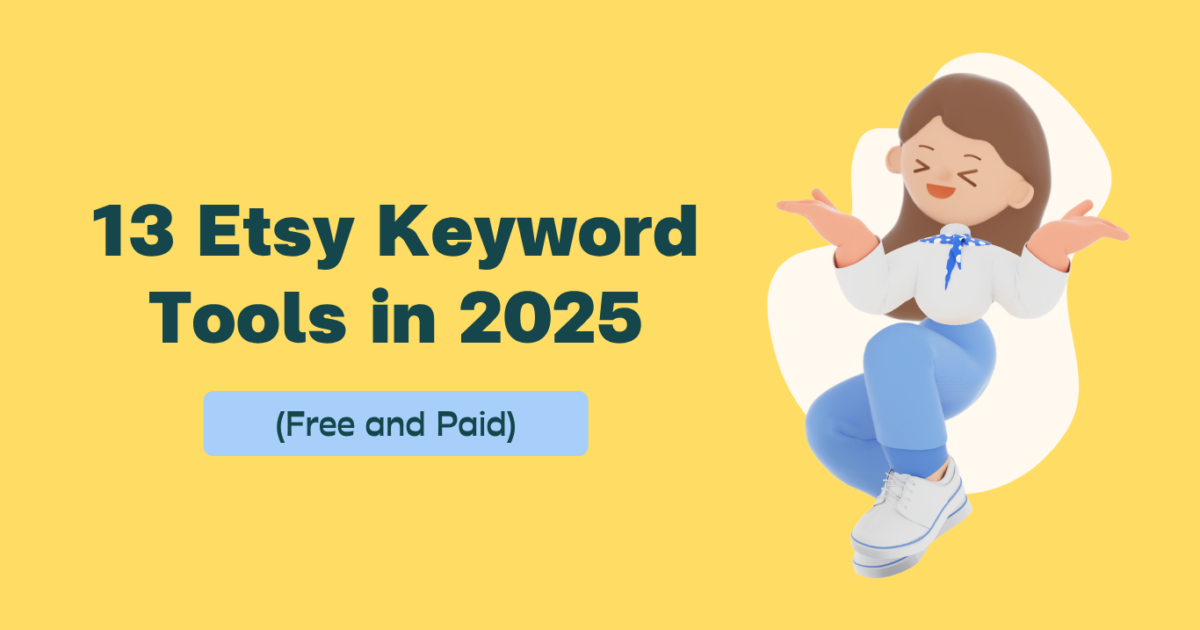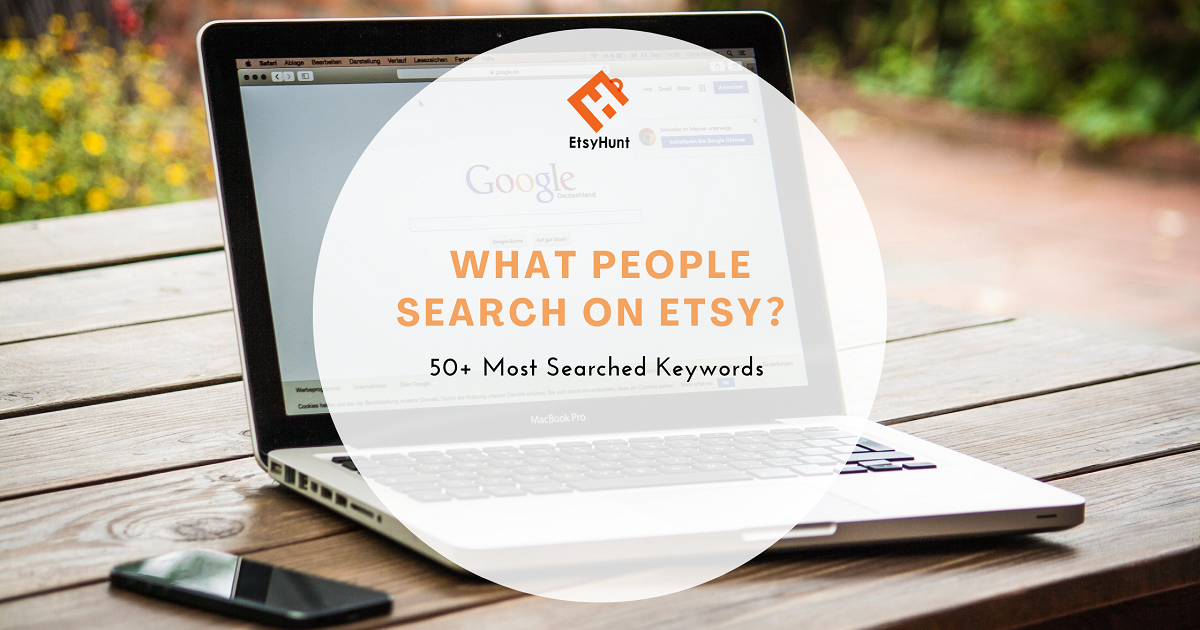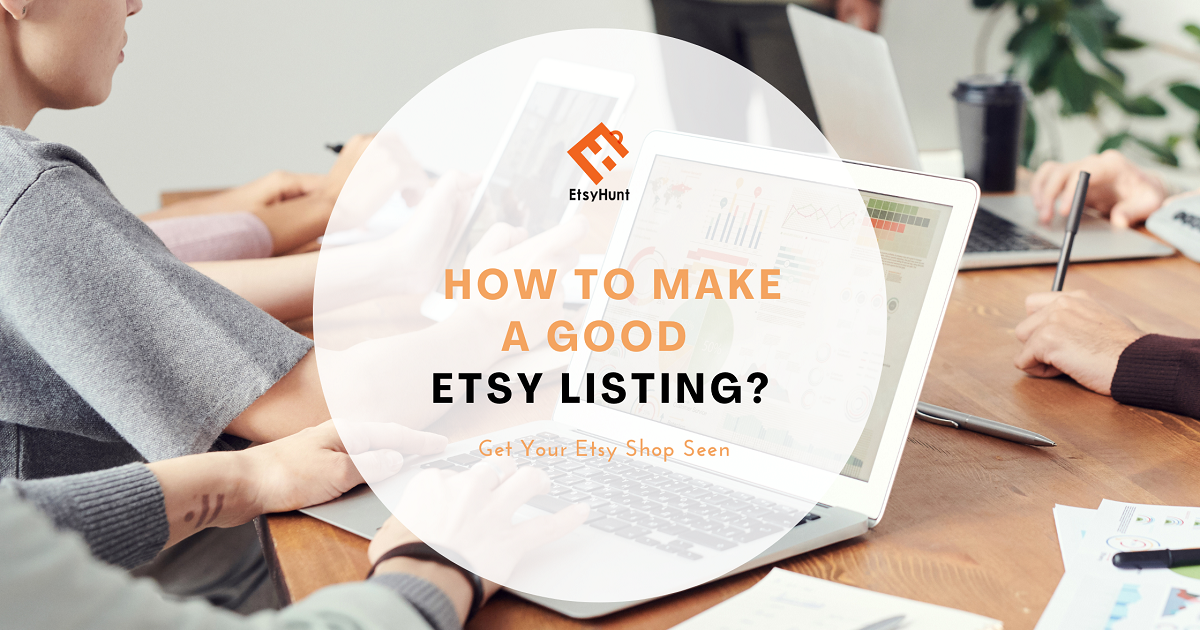Etsy SEO: How to Optimize Your Etsy Shop and Listings

Etsy is a popular online marketplace for handmade and vintage goods, where millions of buyers and sellers connect every day. If you are an Etsy seller, you might wonder how to get more traffic and sales for your shop. One of the most effective ways to do that is by optimizing your shop and listings for SEO (search engine optimization).
SEO is the process of improving the visibility and relevance of your website or web page in the organic (unpaid) results of search engines like Google, Bing, or Yahoo. SEO can help you reach more potential customers who are searching for products or services like yours, and increase the chances of them clicking on your shop or listing.
In this blog post, we will share some tips and best practices on how to optimize your Etsy shop and listings for SEO, based on the official guidelines from Etsy and some expert advice from Printify. We will cover the following topics:
- How Etsy’s search algorithm works
- How to choose the right keywords for your shop and listings
- How to write effective titles, descriptions, and tags for your listings
- How to use categories, attributes, and variations for your listings
- How to optimize your shop homepage and sections
- How to use social media and external links to boost your SEO
- Video to How to Optimize Your Etsy Shop and Listings
How Etsy’s search algorithm works
Before we dive into the details of how to optimize your shop and listings for SEO, it is important to understand how Etsy’s search algorithm works. Etsy’s search algorithm is the system that determines which listings appear in the search results when a buyer types in a query.
According to Etsy, the search algorithm considers three main factors when ranking listings:
- Relevancy: how well a listing matches the buyer’s query
- Quality: how well a listing meets the buyer’s expectations
- Recency: how recently a listing was created or renewed
Relevancy is the most important factor, as it determines whether a listing is shown in the search results at all. Quality and recency are used to rank the relevant listings in order of preference.
To improve the relevancy of your listings, you need to use keywords that match the terms that buyers are using to search for products like yours. Keywords are the words or phrases that describe your product or service. For example, if you sell handmade earrings, some of your keywords might be “handmade earrings”, “dangle earrings”, “boho earrings”, etc.
To improve the quality of your listings, you need to provide accurate and complete information about your product or service, such as price, shipping, materials, dimensions, etc. You also need to use high-quality photos and videos that showcase your product or service in the best possible way. Additionally, you need to maintain a good reputation as a seller by providing excellent customer service, getting positive reviews, and avoiding cases or disputes.
To improve the recency of your listings, you need to keep them fresh and updated by renewing them regularly. Renewing a listing means paying a small fee ($0.20 USD) to move it to the front of the search results. You can renew your listings manually or automatically using tools like Etsy Rank or Marmalead.
How to choose the right keywords for your shop and listings
Choosing the right keywords for your shop and listings is crucial for improving your SEO. Keywords help buyers find your products or services among millions of other listings on Etsy. Keywords also help search engines understand what your shop and listings are about, and rank them accordingly.
To choose the right keywords for your shop and listings, you need to do some keyword research. Keyword research is the process of finding out what words or phrases buyers are using to search for products or services like yours on Etsy or other platforms.
There are several ways to do keyword research, such as:
- Using Etsy’s search bar: You can type in a word or phrase related to your product or service in Etsy’s search bar, and see what suggestions or autocomplete options appear. These are popular terms that buyers are using on Etsy, and they can give you some ideas for keywords.
- Using Etsy’s stats: You can check your shop stats on Etsy to see what keywords buyers have used to find your shop or listings in the past. These are proven terms that have brought you traffic and sales, and they can help you optimize your existing keywords or find new ones.
- Using third-party tools: You can use tools like [EtsyHunt], [Esale],[Marmalead], [eRank], etc., to generate keyword suggestions, analyze keyword difficulty and competition, and track keyword performance. These tools can help you find more keywords, and optimize them for better results.
When choosing keywords for your shop and listings, you should follow these general guidelines:
- Use long-tail keywords: Long-tail keywords are keywords that consist of three or more words, and are more specific and descriptive than short-tail keywords. For example, “handmade earrings” is a short-tail keyword, while “handmade dangle earrings with turquoise beads” is a long-tail keyword. Long-tail keywords are better for SEO because they have less competition, higher conversion rates, and higher relevancy.
- Use synonyms and variations: Synonyms and variations are words or phrases that have the same or similar meaning as your main keyword. For example, synonyms and variations for “handmade earrings” might be “handcrafted earrings”, “artisan earrings”, “homemade earrings”, etc. Using synonyms and variations can help you reach more buyers who might use different terms to search for the same product or service.
- Use local and seasonal keywords: Local and seasonal keywords are keywords that relate to a specific location or time of the year. For example, local keywords might be “Paris earrings”, “French earrings”, “Eiffel Tower earrings”, etc., while seasonal keywords might be “Christmas earrings”, “winter earrings”, “snowflake earrings”, etc. Using local and seasonal keywords can help you target buyers who are looking for products or services that are relevant to their location or occasion.
- Avoid keyword stuffing: Keyword stuffing is the practice of using too many keywords or repeating the same keywords in your shop or listing content. Keyword stuffing can hurt your SEO because it can make your content look spammy, unnatural, or irrelevant to buyers and search engines. Instead of keyword stuffing, you should use your keywords strategically and sparingly in your content, and focus on providing value and quality to your audience.
How to write effective titles, descriptions, and tags for your listings
Once you have chosen the right keywords for your shop and listings, you need to use them in your listing content. Listing content includes titles, descriptions, and tags. Listing content is what buyers see when they browse or search for products or services on Etsy, and what search engines use to rank your listings in the search results.
To write effective titles, descriptions, and tags for your listings, you should follow these best practices:
- Titles: Titles are the first thing that buyers see when they look at your listings, and the most important factor for relevancy. Titles should be clear, concise, and descriptive of your product or service. Titles should include your main keyword at the beginning, followed by some secondary keywords or modifiers that add more details or differentiation. Titles should be no longer than 140 characters, and use punctuation or separators (such as commas, dashes, or pipes) to make them easier to read. For example, a good title for a listing of handmade dangle earrings with turquoise beads might be: Handmade Dangle Earrings | Turquoise Beads | Boho Style | Gift for Her
- Descriptions: Descriptions are the second thing that buyers see when they click on your listings, and the main factor for quality. Descriptions should be informative, engaging, and persuasive of your product or service. Descriptions should include your main keyword in the first sentence, followed by some secondary keywords or modifiers that add more details or differentiation. Descriptions should also include information about your product or service features, benefits, materials, dimensions, colors, options, variations, shipping, returns, policies, etc. Descriptions should be no longer than 1,000 words (or 5 paragraphs), and use bullet points or headings to make them easier to scan. For example, a good description for a listing of handmade dangle earrings with turquoise beads might be:
Handmade Dangle Earrings with Turquoise Beads
These handmade dangle earrings are perfect for adding a touch of boho style to your outfit. They feature turquoise beads that sparkle in the light, and silver hooks that are hypoallergenic and comfortable to wear.
- Handmade with love in Paris
- Turquoise beads sourced from Morocco
- Silver hooks made from recycled metal
- Earrings measure 2 inches long
- Comes in a beautiful gift box
These earrings are a great gift for yourself or someone special. They are suitable for any occasion, such as birthdays, anniversaries, weddings, holidays, etc.
Order yours today and enjoy free shipping worldwide!
- Tags: Tags are the third thing that buyers see when they filter their search results by categories or attributes on Etsy, and an additional factor for relevancy. Tags are words or phrases that describe your product or service features, attributes, categories, styles, occasions, etc. Tags should include your main keyword, some secondary keywords or modifiers, and some synonyms or variations. Tags should be no longer than 20 characters, and use spaces instead of punctuation or separators. You can use up to 13 tags per listing. For example, some good tags for a listing of handmade dangle earrings with turquoise beads might be:
- handmade earrings
- dangle earrings
- turquoise earrings
- boho earrings
- gift for her
- Paris earrings
- Moroccan beads
- silver earrings
- recycled metal
- birthday gift
- wedding earrings
- holiday earrings
- snowflake earring
How to use categories, attributes, and variations for your listings
Categories, attributes, and variations are additional features that you can use to optimize your listings for SEO. Categories, attributes, and variations help buyers find your products or services more easily by narrowing down their search results or filtering them by specific criteria.
Categories are the main groups that Etsy uses to organize its products or services. Categories are based on the type, function, or purpose of your product or service. For example, some of the categories on Etsy are Jewelry, Clothing, Home & Living, Art & Collectibles, etc. You can choose one category for each listing, and up to three subcategories that further specify your product or service. For example, if you sell handmade dangle earrings with turquoise beads, you might choose the following category and subcategories:
- Category: Jewelry
- Subcategory 1: Earrings
- Subcategory 2: Dangle & Drop Earrings
- Subcategory 3: Beaded Earrings
Attributes are the characteristics or qualities that describe your product or service. Attributes are based on the material, color, style, occasion, size, etc. of your product or service. For example, some of the attributes on Etsy are Metal, Gemstone, Style, Occasion, Size, etc. You can choose up to two attributes for each listing, and up to five options for each attribute that match your product or service. For example, if you sell handmade dangle earrings with turquoise beads, you might choose the following attributes and options:
- Attribute 1: Metal
- Option 1: Silver
- Option 2: Recycled Metal
- Attribute 2: Gemstone
- Option 1: Turquoise
- Option 2: Bead
Variations are the options or choices that you offer to buyers for customizing your product or service. Variations are based on the preferences, needs, or requests of buyers. For example, some of the variations on Etsy are Color, Length, Style, Personalization, etc. You can choose up to two variations for each listing, and up to 10 options for each variation that you can provide. For example, if you sell handmade dangle earrings with turquoise beads, you might choose the following variations and options:
- Variation 1: Color
- Option 1: Blue
- Option 2: Green
- Option 3: Purple
- Option 4: Pink
- Option 5: White
- Variation 2: Length
- Option 1: 1 inch
- Option 2: 2 inches
- Option 3: 3 inches
To use categories, attributes, and variations for your listings, you should follow these best practices:
- Choose the most relevant and specific category and subcategories for your listing.
- Choose the most accurate and descriptive attributes and options for your listing.
- Choose the most popular and requested variations and options for your listing.
- Use keywords in your attributes and variations that match your title, description, and tags.



